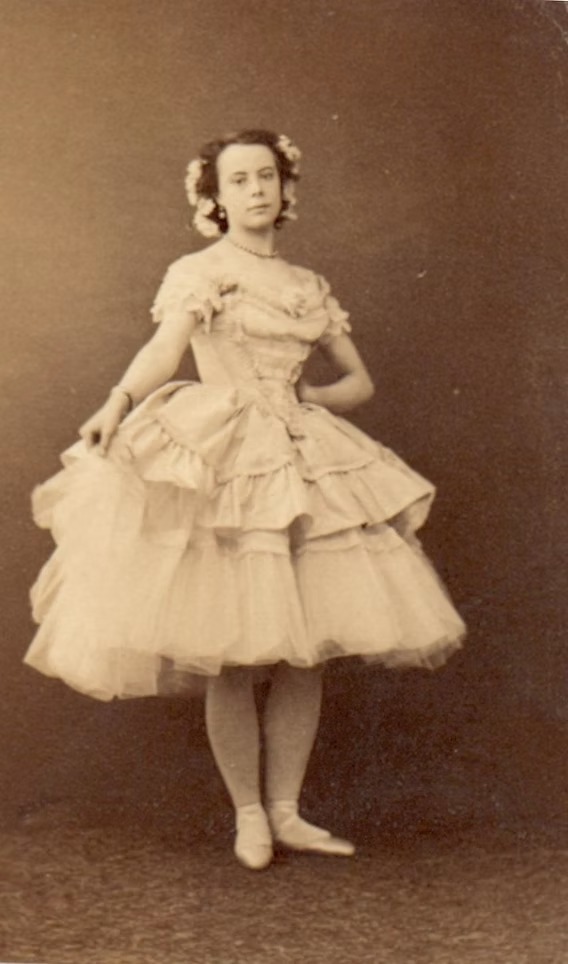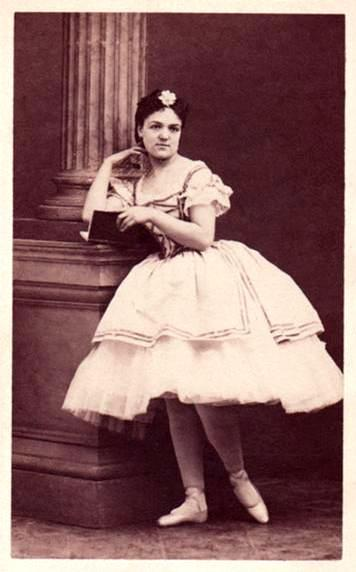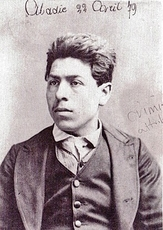This is a novel based on the life of the van Goethem sisters, who were dancers at the Opera of Paris in 1878. The Paris Opera Ballet is a French ballet company that is an integral part of the Paris Opera. It is the oldest national ballet company, and many European and international ballet companies can trace their origins to it.
Marie Geneviève van Goethem (born 7 June 1865) was a French ballet student and dancer with the Paris Opera Ballet, and the model for Edgar Degas's statue Little Dancer of Fourteen Years. In 1878, Marie and Charlotte were accepted into the dance school of the Paris Opéra, where Antoinette was employed as an extra. In 1880 Marie passed the examination admitting her to the corps de ballet of the Paris Opera Ballet and made her debut on the stage in La Korrigane.
Degas is central in the novel as he approaches Marie and asks her to model for him. Edgar Degas (19 July 1834 – 27 September 1917) was a French Impressionist artist famous for his pastel drawings and oil paintings. Degas was a superb draftsman, and particularly masterly in depicting movement, as can be seen in his rendition of dancers and bathing female nudes.
The novel makes references to some of his paintings of dancers. One is dancer with a fan.
Several ballet dancers of the time are mentioned in the novel. One is Marie Taglioni. Marie Taglioni (23 April 1804 – 22 April 1884) was a Swedish-born ballet dancer of the Romantic ballet era partially of Italian descent, a central figure in the history of European dance. She spent most of her life in the Austrian Empire and France. She was one of the most celebrated ballerinas of the romantic ballet, which was cultivated primarily at Her Majesty's Theatre in London and at the Théâtre de l'Académie Royale de Musique of the Paris Opera Ballet.
Rosita Mauri (15 September 1850 – 3 December 1923) was a Spanish dancer and ballet teacher. A prima ballerina of international reputation, she was depicted frequently by artists, sculptors and photographers and was also the subject of several poetic tributes.
Marie Sanlaville (1847–1930) was a leading dancer with the Paris Opéra. She is particularly noted for her association with the artist Edgar Degas, who painted her often and dedicated a rare sonnet to her.
The novel is interspersed with articles, and one mentions criminologist Cesare Lombroso, who connected criminality to physical features.
Cesare Lombroso (6 November 1835 – 19 October 1909) was an Italian criminologist, physician, and founder of the Italian school of criminology. Lombroso rejected the established classical school, which held that crime was a characteristic trait of human nature. Instead, using concepts drawn from physiognomy, degeneration theory, psychiatry, and Social Darwinism, Lombroso's theory of anthropological criminology essentially stated that criminality was inherited, and that someone "born criminal" could be identified by physical (congenital) defects, which confirmed a criminal as savage or atavistic.
Antoinette plays an extra in Zola's L'Assommoir. Émile Édouard Charles Antoine Zola (2 April 1840 – 29 September 1902) was a French novelist, journalist, playwright, the best-known practitioner of the literary school of naturalism, and an important contributor to the development of theatrical naturalism.
L'Assommoir, published as a serial in 1876, and in book form in 1877, is the seventh novel in Émile Zola. Usually considered one of Zola's masterpieces, the novel — a study of alcoholism and poverty in the working-class districts of Paris — was a huge commercial success and helped establish Zola's fame and reputation throughout France and the world.
Busnach adapted the novel for the theatre. William Bertrand Busnach (7 March 1832, Paris – 20 January 1907, Paris) was a French dramatist. His greatest successes he achieved were his adaptation of celebrated novels for the stage; for example, L'Assommoir, 1881.
An important character in the novel is Emile Abadie, who is a real person and was tried for murder twice. Emile Abadie and Michael Knobloch were accused of murdering a grocer’s boy. Degas was present during the three months of trial. The artist made several sketches of Abadie and Knobloch, emphasizing their small foreheads and jaws.
Emile was sentenced to death, but her sentence was changed to transportantion to New Caledonia. The penal colony of New Caledonia was a penitentiary establishment which was in operation from 1864 to 1924 on the southwest Pacific islands of New Caledonia. Many French prisoners from mainland France (approximately 21,000) were deported there.
In France in this time Empress Eugenie and Napoleon III had fled to England. When the Second Empire was overthrown after France's defeat in the Franco-Prussian War, the empress and her husband took permanent refuge in England and settled at Camden Place in Chislehurst, Kent. The president of the Republic of France was Jules Grevy. François Judith Paul Grévy (15 August 1807 – 9 September 1891), known as Jules Grévy, was a French lawyer and politician who served as President of France from 1879 to 1887. He was a leader of the Moderate Republicans, and given that his predecessors were monarchists who tried without success to restore the French monarchy, Grévy is considered the first real republican president of France.



















No comments:
Post a Comment